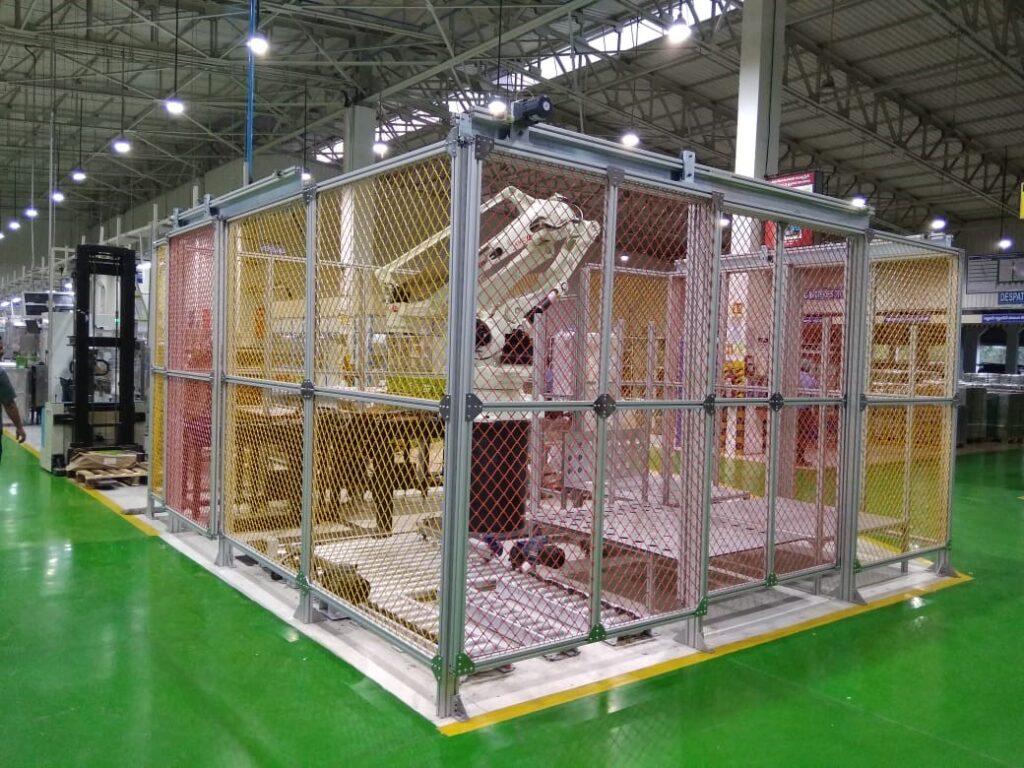The Benefits of Using Industrial Robots to Automate
The next technological revolution is Industry 4.0, often known as the “fourth industrial revolution” by some. It encompasses the steam/water power, electrical, and electronics revolutions of the preceding three industrial revolutions. Industry 4.0 expands on the automation and “smart” capabilities of the third industrial revolution.
As organizations begin to incorporate smart manufacturing into their production, examples of this may be found all around us. As a result, industries are increasingly using robots, which bring extraordinary precision, productivity, and flexibility. In addition, collaborative robots that can work alongside humans to boost flexibility and efficiency are becoming more common in manufacturing. The Industrial Internet of Things is gaining popularity.
In 2019, the international market value for robotic systems was about 21.83 billion US dollars, with a projected increase to 66.48 billion by 2027. Now is the moment to embrace Industry 4.0 and reap the benefits.
Reduced Production Costs
Reduced Production Costs are one of the most compelling reasons in favor of industrial robots. Robots will lower manufacturing costs by reducing the need for internal expenditures to compensate for human pay.
The initial setup expenses are outweighed by a rapid return on investment (ROI). With industrial robots, throughput speeds rise, which has a direct influence on the output. Implementing industrial robots is expected to save more than 22 percent in labor expenses by 2025.
Increased output
A lean production line is essential for enhancing productivity. Typically, switching one person on a crucial operation in a manufacturing line with a robot boosts productivity by 40% in the same working hours simply because a robot has more stamina and never quits.
An autonomous robot can work continuously without stopping for breaks, sleep, or holidays. A company’s activities can be switched from 8 to 12 hour days to 24 hours a day, 7 days a week.
Assurance of Quality
Quality assurance is to be expected with the usage of machines in manufacturing. Industrial robots will be capable of ensuring uniformity in the large manufacturing of produced goods. The error rate in manual procedures is around 1 to 1.15 percent. Automated machines in the manufacturing business, on the other hand, have an error rate as low as 0.00001 percent.
The possibility of human error that assembly line workers pose will be eliminated. Robots, because of their high accuracy levels, may also be utilized to make higher quality items that correspond to certain quality requirements, while also lowering the time required for quality control.
Industrial Security
Improved worker safety is a significant advantage of automation. Using robots to load and unload items or transport large machine parts reduces the incidence of an accident.
Industrial automation also prevents employees from approaching assembly lines too closely, enhancing safety. Thermal sensors continuously monitor the temperatures in the manufacturing area. The sensors will transmit a warning if they detect a temperature surge. Precautions may be taken immediately to safeguard the safety of everyone on the manufacturing floor.
Increase Customer Attraction
Automation aids in achieving the best throughput while spending the least amount of money. Your organization will get more customers as a result of the time and cost savings. By incorporating an industrial robot into manufacturing, you may expand the range of products available.
We hope this blog has provided you with some insight into the factors you should examine before integrating industrial robots in your business.
AMC Automation has over 75+ years of expertise in Manufacturing Experience & Excellence. We innovate, design, & build automation systems. have supplied many 1st time solutions to the industry successfully. Among our solutions are the following:
- Depth Technology and Design knowledge
- In house R & D
- Strong Machining Capability
- Skilled Manpower.
- Proven Market Reputation & Position
- Reputed Brand Name – AMC
- Best Cost Performance Ratio
- Reliable Brand Name
- Strong After Sales & Service Support
However, if you want any more assistance or want to learn more about the perks of industrial robots and how they may be effectively used in your project, please do not hesitate to contact our team of automation specialists, who are always delighted to assist. You can visit us at www.amcautomation.in


